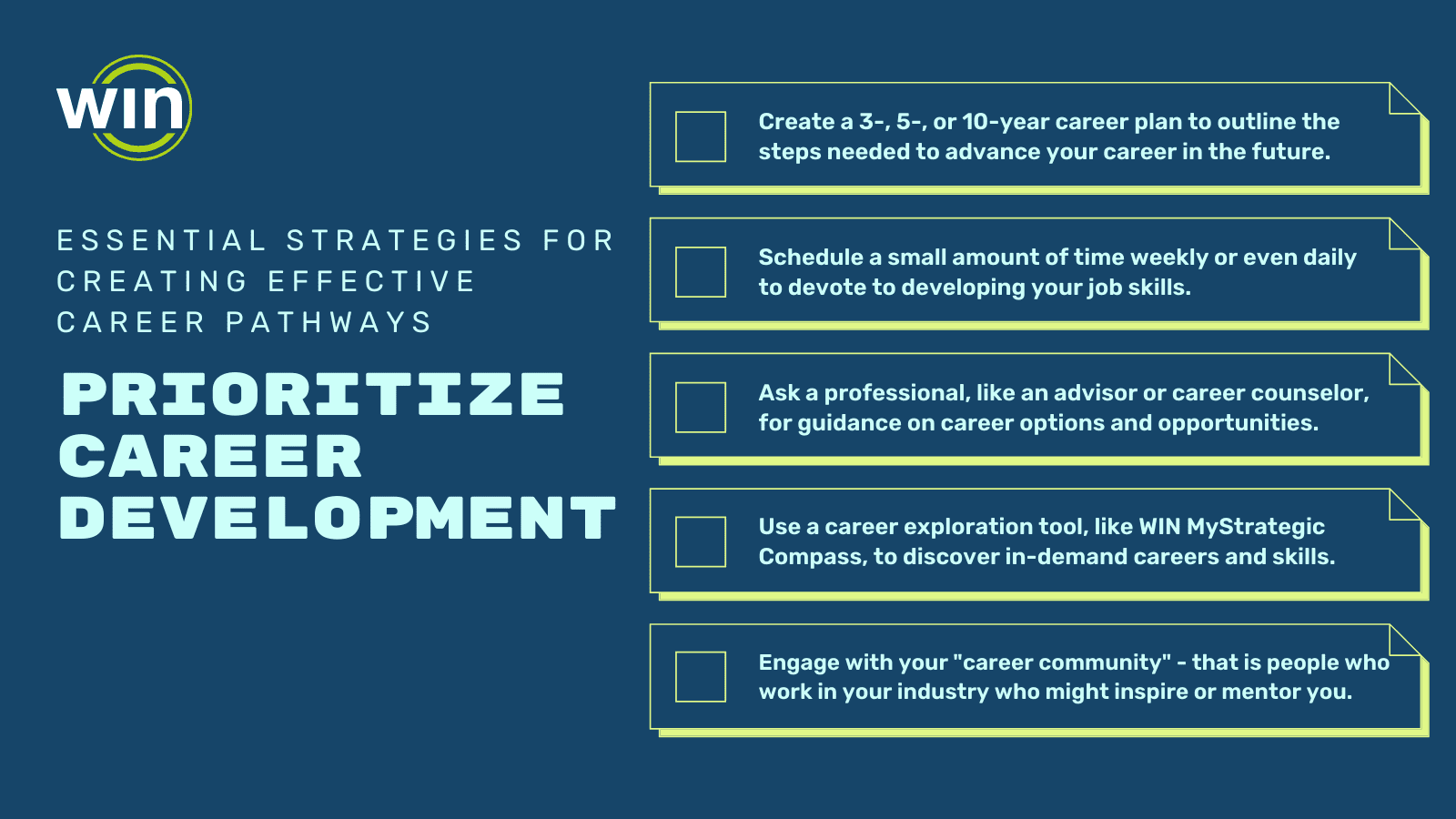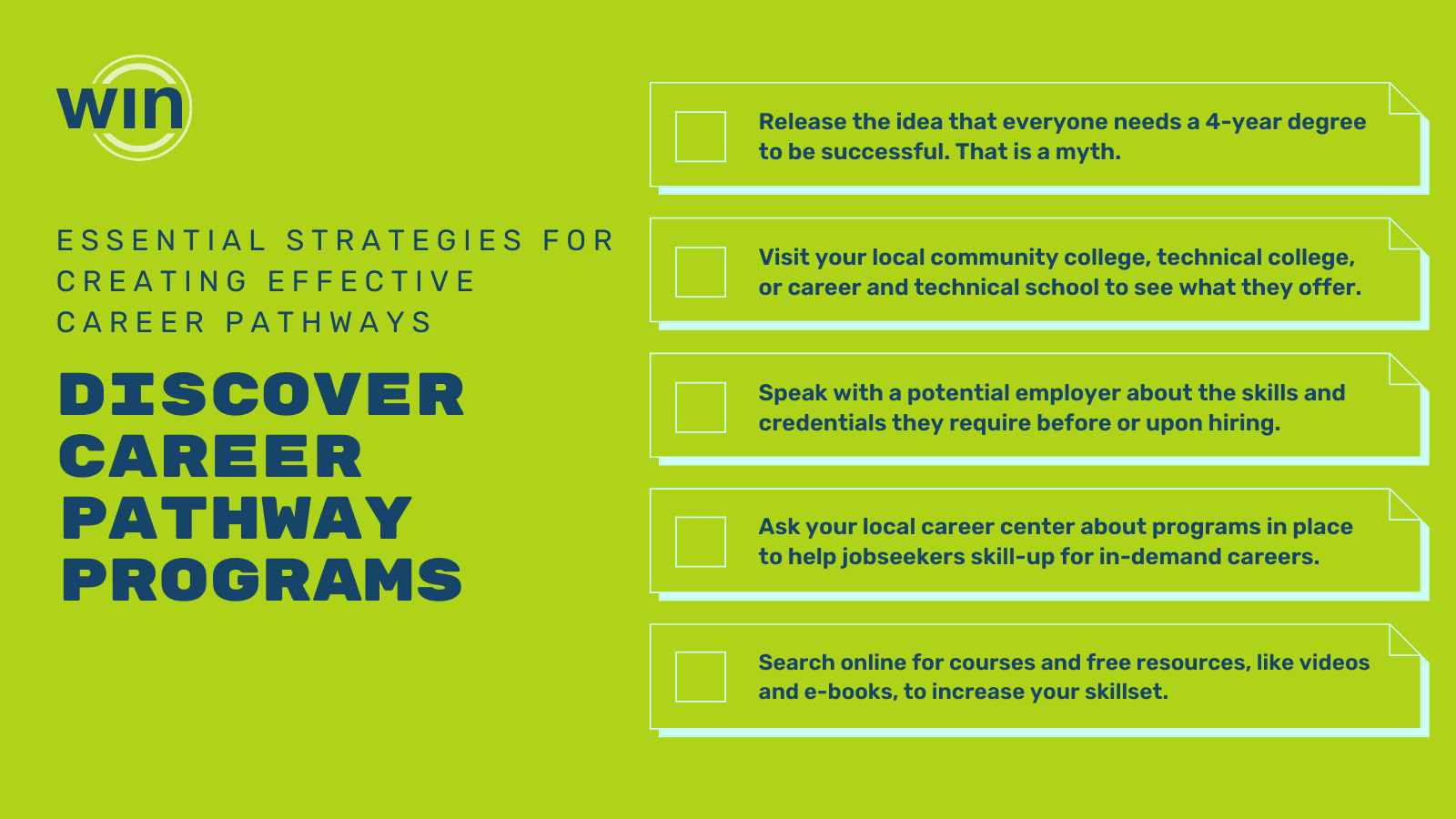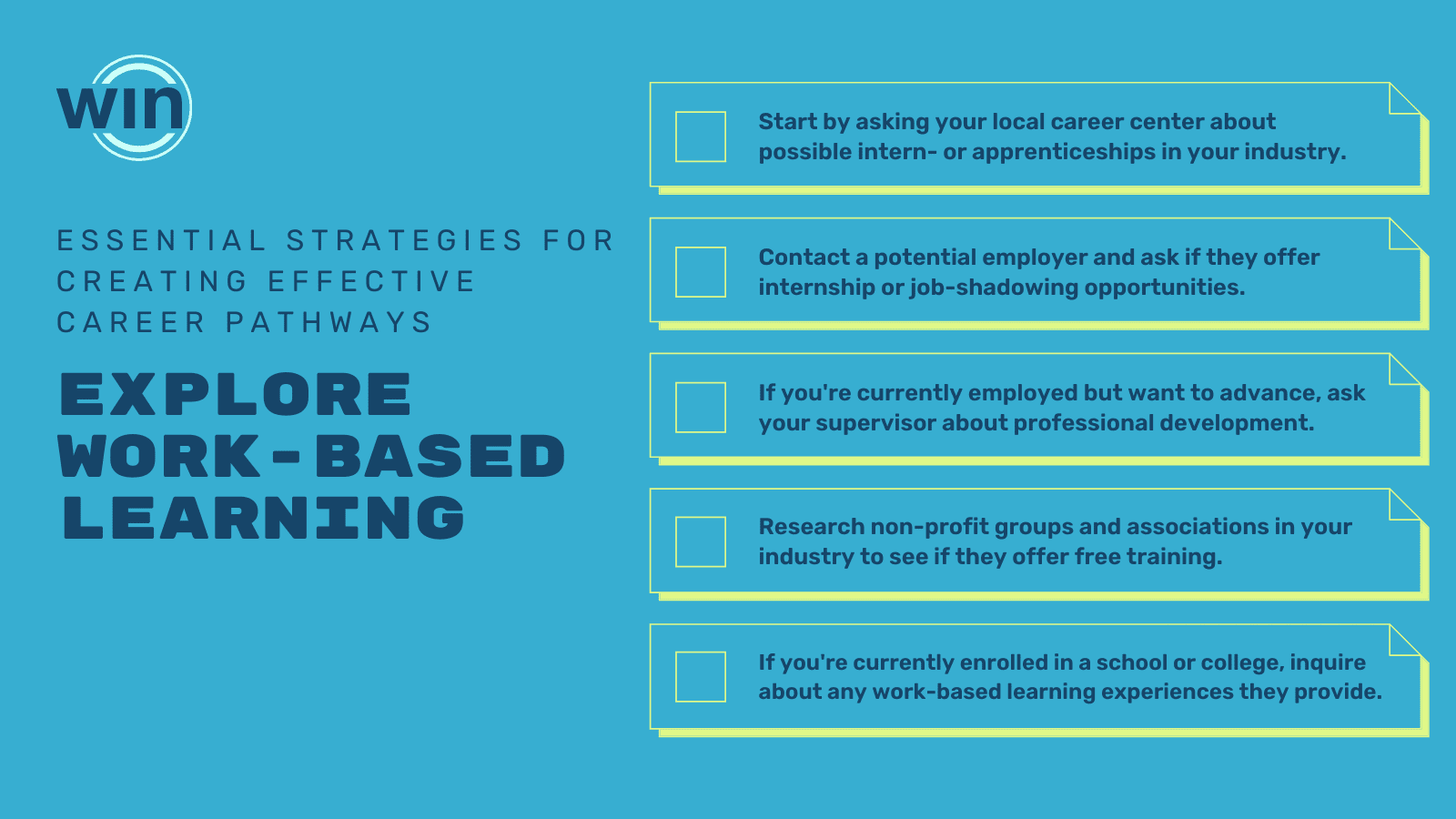Most of us have career goals—either general ideas about what we’d like to do or a concrete goal we’re trying to reach, but it can be challenging to come up with a plan for how you’ll get there. Before you can get started on your career pathway, you first need to identify the resources and strategies that will help you along the way. Below are three major steps you can take to build your career pathway and start working towards your goals.
- Prioritize Career Development: The first step in creating your career pathway is mapping out where you’d like to be in three, five, and ten years. Once you have these goals outlined, begin thinking about the steps you’ll need to take to reach each checkpoint and the job skills you should develop to help you get there. Meet with a career counselor or advisor discuss your options, then use a career exploration tool, like WIN’s myStrategic Compass, to learn more about the careers and industries that interest you. Connect with people in that career field who can offer guidance and advice. Following these steps will help you develop a clear plan for what your career pathway will look like.
- Discover Career Pathway Programs: When you’ve identified the career you want to pursue, find out the specific skills and qualifications needed to get hired. If further education is required for your chosen career, contact your local community college or technical school to learn about the programs they offer and the degrees or certifications you could earn by enrolling. You can also contact your local career center to find out what programs are available to help job seekers build their employability skills. Explore these options and seek out online courses that can help you expand your skill set.
- Explore Work-based Learning: Internships, apprenticeships, and job-shadowing programs are all great ways to gain hands-on experience in your chosen career. Contact potential employers to find out if they offer any of these opportunities. Nonprofit organizations in your career field may also offer training programs. If you are currently employed and want to advance within your organization, ask your supervisor about professional development opportunities. If you are enrolled in a college or technical school, find out about available internships and other work-based learning experiences. There are many ways to gain practical work experience in your career field that will allow you to develop your skills and identify your future career goals.
Completing these steps can help you create a roadmap for your career and lay out a specific path to follow. It’s important to remember that building your career pathway and reaching your goals doesn’t have to be something you pursue on your own. Engaging with your community for guidance and utilizing the resources available to you will ensure that you not only create a clear and detailed career pathway, but that you have the skills and experience to successfully follow that pathway and achieve your goals.
Save or screenshot the graphics below so that you can start constructing your next career path today!



